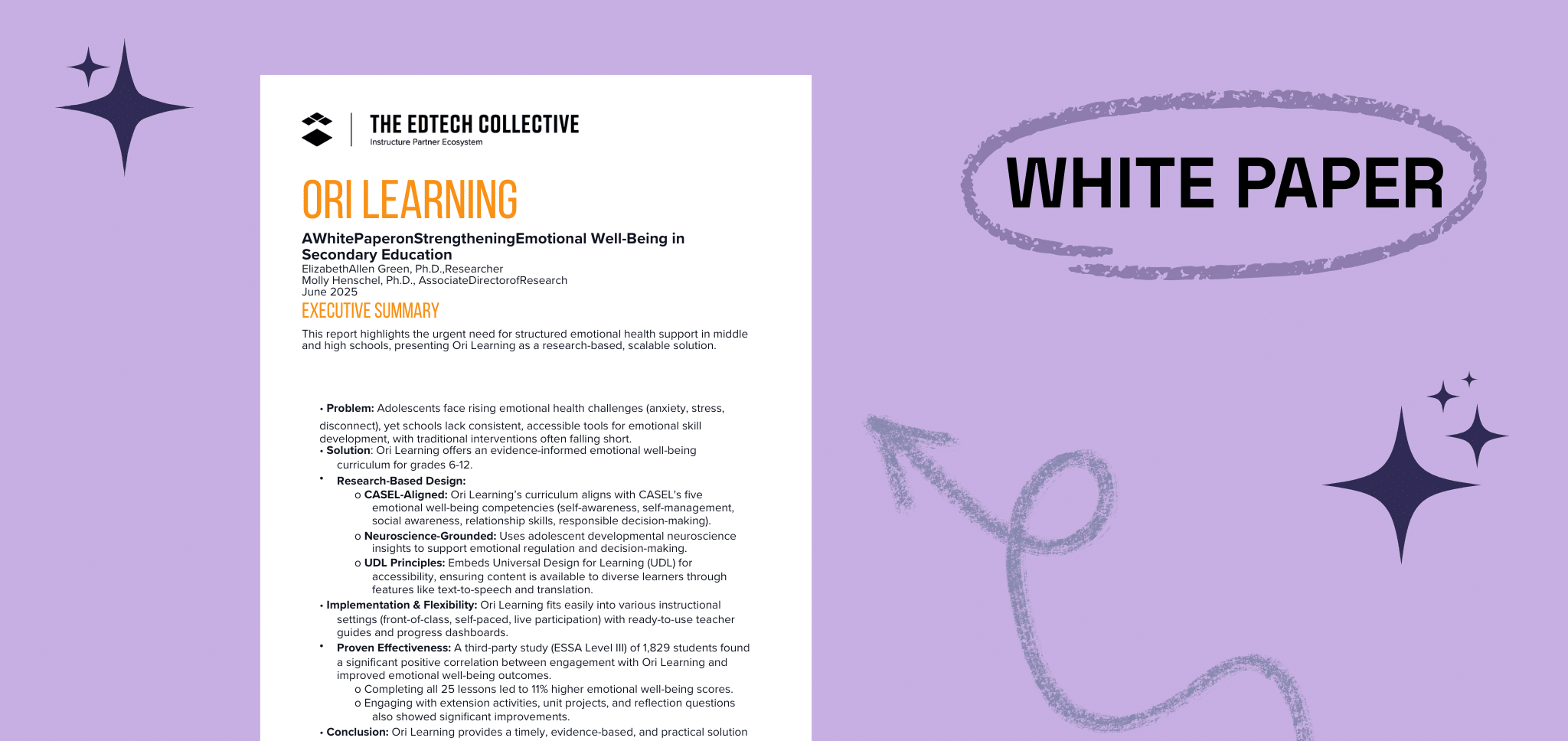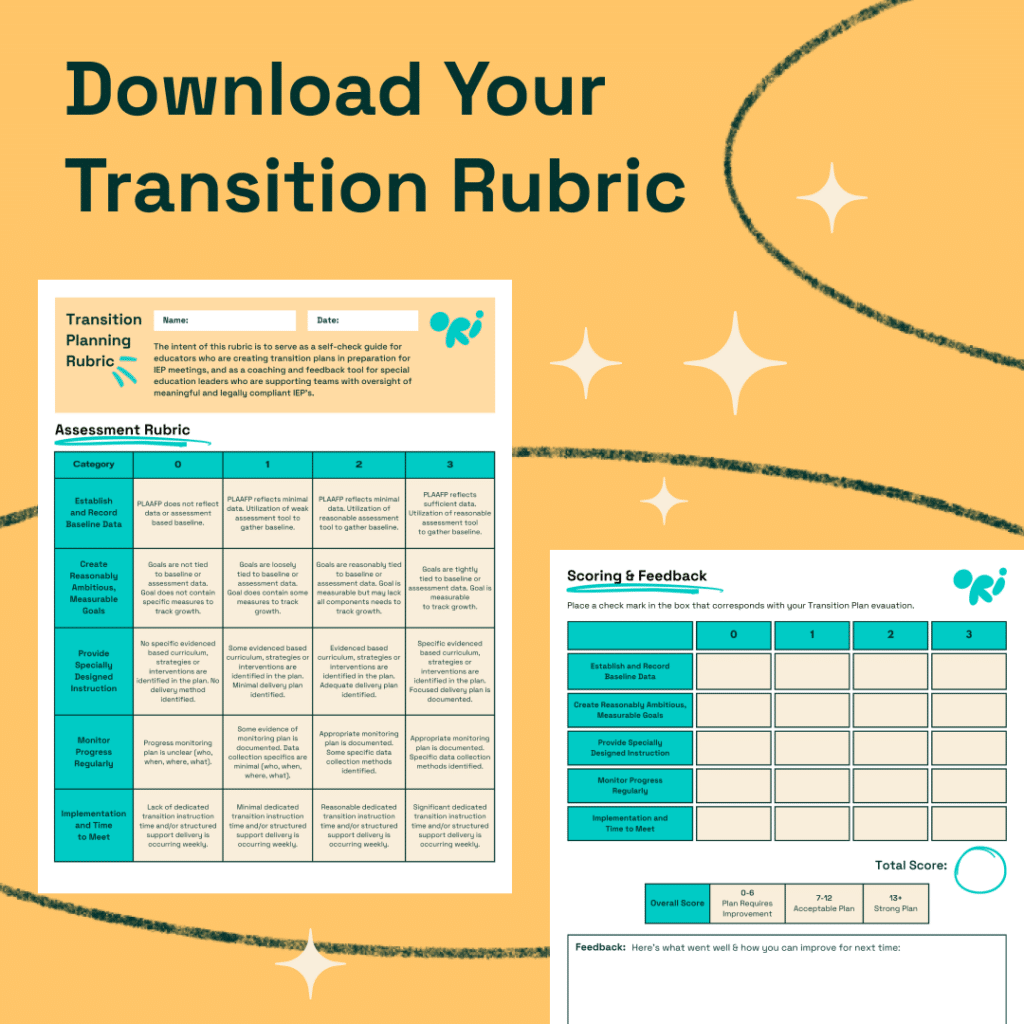

Every student should have the chance to succeed, regardless of their abilities. That’s the goal of the Americans with Disabilities Act, or ADA, a law that protects the rights of people with disabilities and ensures they have equal access to public services, including education.
The benefits of a strong ADA transition plan are clear. And yet a 2020 report published by the Government Accountability Office estimated that 63% of school districts have barriers that might limit access for people with disabilities in a quarter or more of their facilities.
A well-developed transition plan is key to identifying and removing these barriers, ensuring students with disabilities can fully participate in school life.
The ADA is a law that ensures people with disabilities have the same opportunities as everyone else. There are different sections of the ADA, but the key one for schools is Title II, which covers public services.
The ADA doesn’t spell out exactly how schools should be accessible. Instead, it requires schools to have a transition plan, which should include a couple of key things:
This is where you take a close look at your school and identify any areas that might be creating barriers for students with disabilities.
For example, are there physical barriers like stairs without ramps? Or maybe communication barriers where information isn’t available in different formats? The self-evaluation helps you pinpoint these issues.
Once you know what needs to be addressed, you need a plan to fix it. You can draw up a timeline that lays out the steps you’ll take and when you’ll get them done.
If you’re looking for more information on Title II of the ADA, the U.S. Department of Justice has several helpful resources and provides guidance on creating transition plans specifically for schools.
See what Ori Learning can do for your school or district.
A key mission in any school should be making sure all students feel welcome and have the tools they need to learn, and clear and well-defined ADA transition plans have a positive impact on everyone.
Removing barriers and creating a more accessible environment ensures students with disabilities feel more included and supported, which can lead to improved grades and test scores.
A 2017 study on satisfaction among students with disabilities noted that the way in which these students perceived the campus climate affected the relationship between belonging and student satisfaction. While the study focused on college students, its message applies across the board: when the school climate encourages all students to feel welcome and valued, the entire school environment benefits. There’s a stronger sense of belonging and a more beneficial learning atmosphere for everyone.
Positivity is another important marker of student well-being and success. A 2020 study in the Journal of School Health observed a link between a positive school climate and high satisfaction with school and reduced school absenteeism. The study data also suggested that students with more absences tended to perform less well academically, indicating that grades could be improved by a positive school climate and school satisfaction: two things that can be achieved with a well-formed transition plan.
Here are some key ADA transition plan requirements:
A key part of transition planning is evaluating your school to identify any accessibility barriers, such as physical barriers (staircases or inaccessible bathrooms), or communication barriers (providing information in different formats). It’s essential to do this adequately to avoid common legal errors in your planning.
Make sure to involve all stakeholders in your planning process, including administrators, teachers, special education educators, parents, and the students themselves. Everyone’s perspective is valuable in helping you to identify and address accessibility issues.
The ADA requires transition plans to include a “detailed description” of the methods to remove the barriers you identified in the self-evaluation. You need to clearly define your goals for accessibility and make sure they’re Specific, Measurable, Achievable, Relevant, and Time-bound (SMART). This will help you track your progress and ensure your plan is realistic and achievable.
Keeping good records is essential for your ADA transition plan’s success. Track your progress by documenting the steps you’ve taken to remove barriers. You should also keep a record of the opportunity provided to interested parties (such as the students with disabilities and their caregivers) to participate in the plan development.
Our Transition Planning Rubric is designed to support district leaders and educators in guiding their teams towards excellence in transition planning.
It provides comprehensive criteria that cover the breadth of transition planning, from gauging student engagement to evaluating post-secondary goals and services.
Expand your team’s capabilities and improve the success of IEP meetings.

If you’re ready to create a roadmap for accessibility in your school, this step-by-step guide will help you develop an effective ADA transition plan and break it down into manageable tasks.
Building a strong team to make your ADA transition plan is key. Where possible, include representatives from various areas like administration, special education, facilities, teachers, and even parents. Each person brings a valuable perspective to the table.
Within your team, you should designate an ADA coordinator—this is one of the three basic administrative requirements of the program. The coordinator is responsible (and should be named as responsible in the plan) for coordinating the efforts of your school, ensuring they comply with Title II and investigating any complaints that the entity has violated Title II.
Imagine yourself as a student with a disability in your school. Is there anything that might create a barrier? This self-evaluation is your chance to identify these issues. You can use this ADA Self-Evaluation Questionnaire to get a clearer understanding of your responsibilities.
If you need help conducting your self-evaluation process, the Justice Department’s Civil Rights Division and the Department of Education’s Office for Civil Rights recently released a webinar that outlines how school districts can increase accessibility for people with disabilities within the school facilities.
Not everything can be addressed overnight. Once you’ve identified accessibility barriers, prioritize them based on need and impact. This will help you create a realistic plan and budget for addressing them.
Your required budget depends on the changes you plan to make, in what order, and the speed at which you’ll make them. The University of Northern Colorado has shared a helpful resource, Budgeting for Access, which outlines the average costs of different items and accomodations you may need to make.
Seek out support wherever possible. A 2024 study in Cities observed that planners of high-quality plans were supported by internal and external factors, including technology, training, interdepartmental relationships, and connections with other organizations.
Are your resources limited? Look into grant opportunities offered by your state government or partner with community organizations to support your transition plan.
The ADA requires transition plans to include a “schedule of improvements to upgrade accessibility in each year” following the implementation of the plan. For this, you’ll need to develop a detailed timeline outlining the steps you’ll take to address the barriers identified in your self-evaluation.
You don’t have to overwhelm your team by trying to do everything at once—instead, break down larger projects into smaller, more manageable tasks. This will make the process feel less overwhelming and help you track your progress.
It’s important to clearly communicate the necessity of ADA compliance and the benefits of an inclusive learning environment to your stakeholders. Focus on small, achievable wins to keep momentum going. Remember, you can re-assess your plan every year and work on improving your transition programming following these steps.
The bottom line is that a well-developed ADA transition plan is a win-win for everyone.
Making a plan for accessibility in your school doesn’t have to be overwhelming. If you follow the steps outlined in this guide, you can create a practical plan that fits your school’s needs. You’ll need to review your plan for compliance and validity, and use it in your yearly planning of projects and funding decisions.
Remember the positive impact: a more inclusive environment benefits all students by fostering a sense of belonging, with the added bonus of reducing your legal risk.
Your transition plan is a roadmap for accessibility. ADA transition plan requirements include a self-evaluation to identify barriers for students with disabilities, and your SMART goals and timelines for fixing them. You’ll need to create a detailed action plan outlining the specific steps to remove those barriers and create a more inclusive learning environment.
The key difference between an individual transition plan (ITP) and an ADA transition plan lies in who the plan benefits. An individual transition plan focuses on a specific student with a disability and outlines how the school will help them achieve their needs and goals. An ADA transition plan is broader, looking at the entire school environment and identifying physical or communication barriers that could prevent any student with a disability from fully participating.
A transition plan includes everything needed for you to make your school more accessible to everyone. It starts by identifying any obstacles that hinder accessibility, then describes how you can make these facilities accessible, with a schedule for making the modifications and identification of the people responsible for their implementation.
A self-evaluation involves analyzing your school for anything that might make it hard for students with disabilities to participate. You can then use these findings in a transition plan to create a roadmap, with clear goals and timelines for fixing the problems you identified.